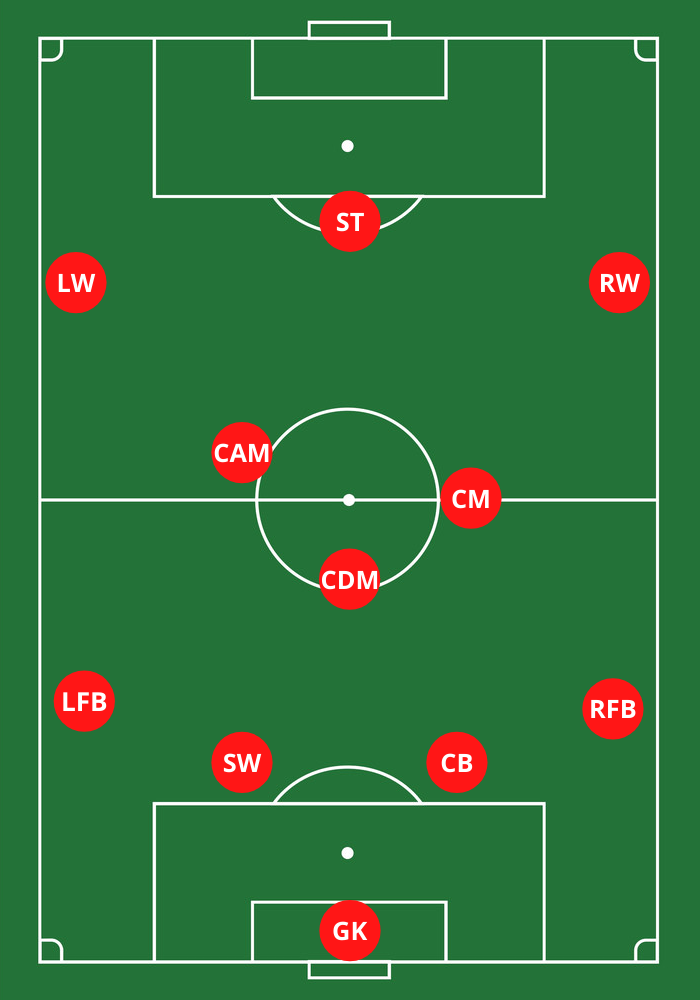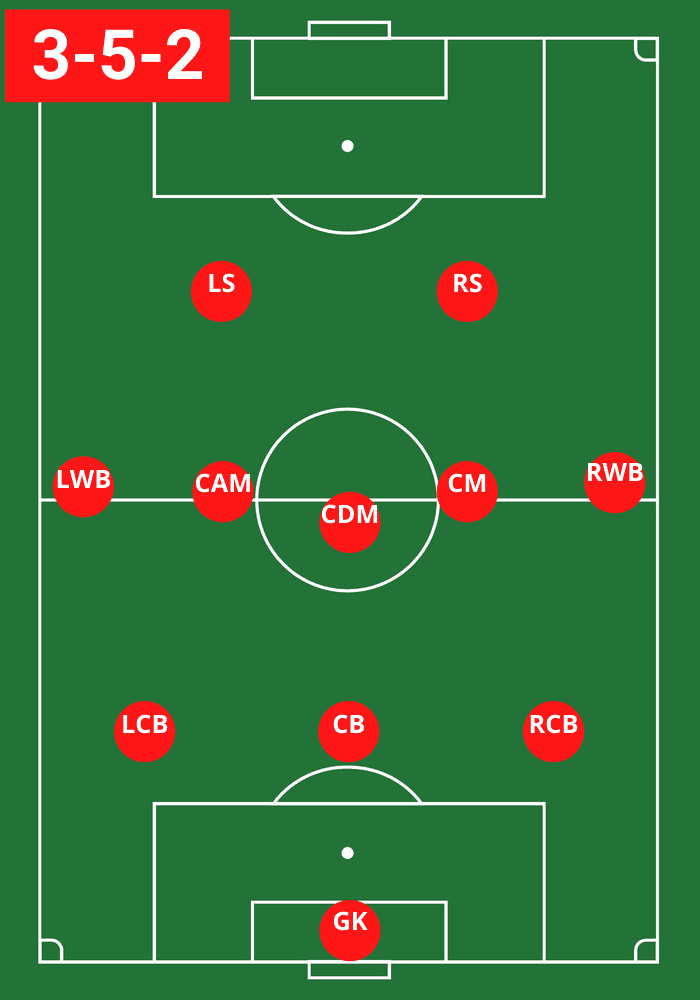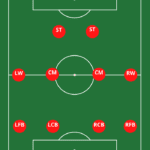- Last Updated -
The Changing Role of Wingers in Soccer
Soccer has captivated millions around the world for decades. It is a sport that has undergone significant evolution, both in terms of its rules and tactical approaches. From its humble beginnings on muddy fields to the grandeur of modern stadiums, soccer has transformed into a global phenomenon that mesmerizes fans with its artistry and excitement.
Throughout this transformation, various positions within the game have evolved alongside it. One such position that has seen remarkable changes is that of the winger.
Wingers are players who traditionally operate on either flank of the pitch, positioned between the midfielders and full-backs. Their role has been crucial in shaping a team’s attacking dynamics throughout soccer’s history.

Brief Overview of the Game of Soccer and Its Evolution over Time
Soccer traces its roots back to ancient civilizations, with variations played by different cultures across centuries. However, it was not until 1863 when The Football Association in England established standardized rules for the game.
Since then, soccer’s popularity grew rapidly worldwide. Over time, soccer witnessed several pivotal moments that revolutionized how it was played.
One such moment occurred in 1954 when Hungary’s “Magical Magyars” introduced what would become known as Total Football – a fluid style where players interchange positions seamlessly. This approach laid the foundation for modern tactical innovation and influenced how wingers operated on the field.
The introduction of international tournaments like the FIFA World Cup further accelerated soccer’s global appeal, allowing diverse playing styles from different countries to influence one another.
The Brazilian flair with their wing play epitomized by legends like Garrincha and Jairzinho showcased new dimensions wingers could bring to a team’s attacking prowess.
Introduction to the Concept of Wingers in Soccer and Their Traditional Role
In traditional formations like the 4-4-2 or 4-3-3, wingers played an essential role in teams’ attacking strategies. Positioned wide on the field, their main objective was to provide width to the team’s attack by hugging the touchline. By staying near the sideline, wingers stretched the opposition’s defense and created space for their teammates in central areas.
A significant responsibility of traditional wingers was delivering accurate crosses into the box for strikers to convert into goals. Their ability to whip in inviting balls from wide positions often made them a constant threat to opposing defenses.
This artistry of crossing required exceptional technique and precision. Moreover, wingers were not only expected to excel in attacking play but also contribute defensively.
They tracked back diligently, supporting their full-backs when defending against opposing attacks. This defensive commitment ensured that teams maintained balance and prevented opponents from exploiting gaps left behind when wingers ventured forward.
As we delve deeper into this article, we will explore how modern soccer has witnessed a dynamic shift in winger roles due to tactical changes and evolving demands of the game.
The subsequent sections will unveil how these changes have transformed wingers into multifaceted players who impact team dynamics far beyond their traditional responsibilities.

Traditional Role of Wingers
Definition of wingers in soccer and their position on the field
Wingers, also known as wide midfielders or wide forwards, are players who occupy the outer flanks of the soccer field.
Positioned just ahead of the full-backs, wingers typically operate in the attacking third but are also expected to contribute defensively when required. Their main objective is to provide width to the team’s attack by stretching out play toward the touchline and creating space for their teammates.
Historical context: How wingers were primarily used in early formations
In the early days of soccer, wingers were deployed in traditional formations such as 2-3-5 or 4-2-4. These systems emphasized an attacking style of play with a focus on feeding crosses into the box for strikers to convert into goals.
Wingers’ primary role was to stay close to the touchline, receive long balls from their teammates, and deliver accurate crosses into dangerous areas where their forwards could capitalize. During this period, due to limited offside rules and slower defensive transitions, wingers had more time and space to operate.
Their ability to beat defenders one-on-one using dribbling skills was crucial. Successful wingers were often renowned for their pace, agility, and mesmerizing footwork that left opponents bewildered.
The primary responsibilities of wingers:
Wingers possessed distinct responsibilities that played a pivotal role in shaping a team’s attacking strategy:
1. Providing width to the team’s attack by hugging the touchline: Wingers acted as outlets for their teammates when building attacks from deep positions.
By staying wide near the touchline, they stretched out opposing defenses horizontally and created additional passing options for players in central areas.
2. Delivering crosses into the box for strikers to score goals:
A winger’s ability to whip in accurate crosses with precision and pace was highly valued. They were expected to exploit their position near the byline to deliver pin-point crosses into the penalty area, allowing their teammates to score goals, particularly strikers who thrived on aerial prowess.
3. Tracking back defensively to support full-backs: While wingers primarily focused on attacking duties, they were also responsible for assisting full-backs defensively.
Wingers would track back, applying pressure and providing cover in wide areas to nullify opposing attacks from the flanks. Their defensive contribution was crucial in maintaining balance within the team structure.
Over time, as soccer evolved tactically and technically, the role of wingers began to transform. The demands placed upon them expanded beyond traditional expectations, leading to a notable shift in their role within modern soccer systems and formations.

Evolution of Winger’s Role in Modern Soccer
Tactical changes leading to a shift in winger’s role:
Soccer, much like any other sport, is constantly evolving. The way teams approach the game tactically has a profound impact on the roles and responsibilities of individual players. In recent years, we have witnessed significant changes that have revolutionized the role of wingers in modern soccer.
One key factor contributing to the evolution of the winger’s role is the emergence and widespread adoption of different formations such as 4-3-3 and 4-2-3-1.
These formations place a greater emphasis on attacking play and fluid movement, allowing wingers more freedom to roam across the pitch.
Unlike traditional formations where wingers were primarily focused on staying wide and delivering crosses, these new systems encourage wingers to be more versatile and dynamic in their playing style. Another pivotal change influencing the role of wingers is the increased emphasis on possession-based football and fluidity in play.
With teams placing greater emphasis on maintaining possession, players are now expected to excel not only in their skills but also in their ability to combine effectively with teammates. These changes require wingers to develop better technical abilities such as close ball control, passing accuracy, and spatial awareness.
New responsibilities added to the winger’s role:
As tactical shifts occurred within modern soccer, new responsibilities were added to the repertoire of wingers. One notable change is that wingers are now encouraged to cut inside and become goal-scoring threats themselves.
Players like Cristiano Ronaldo, Arjen Robben, and Lionel Messi have excelled at this style of play by cutting inside onto their stronger foot from wide positions and unleashing powerful shots or precise finishes into goals.
Inverted wingers have had a significant impact on modern tactics as well. They operate from opposite flanks than traditionally expected; for example, a right-footed player would play on the left wing.
This tactical choice creates opportunities for the winger to cut inside onto their preferred foot, making them unpredictable and difficult to defend against. The presence of inverted wingers adds an extra dimension to a team’s attacking play, as they can either shoot themselves or provide dangerous passes into the box.
Another responsibility that modern wingers have taken on is participating more actively in build-up play from deeper positions. Instead of solely relying on the central midfielders for creative contributions, wingers now contribute by creating passing triangles with their fellow midfielders.
By dropping deep and combining with central players, they have become crucial in progressing the ball through the midfield and initiating attacks from wider areas. This involvement in build-up play also allows wingers to provide through balls or key passes for their teammates.
Their ability to spot openings in opposition defenses and deliver incisive passes has become increasingly important. Wingers can unlock defenses by providing accurate crosses, diagonal balls behind defensive lines, or threading intricate passes into the path of strikers making runs toward the goal.
The evolution of the winger’s role in modern soccer has transformed them from mere providers of width and crosses into versatile attackers who can score goals themselves and actively contribute to team buildup.
These changes have added layers of complexity to their game while enriching team dynamics and formations across different leagues around the world.

Impact on Team Dynamics and Formations
Formation Adaptations Due to Changing Winger Roles
In modern soccer, the changing role of wingers has had a profound impact on team dynamics and formations. One notable adaptation is the use of wing-backs instead of traditional wingers in certain systems.
Wing-backs are specialized players who combine the attacking prowess of wingers with defensive discipline, making them an integral part of the team’s tactical setup.
This tactical shift enables teams to maintain width in their attacks while also providing defensive stability. Examples: A prime illustration of this formation adaptation can be seen in Antonio Conte’s Chelsea during their title-winning campaign in 2016-2017.
Conte implemented a 3-4-3 formation that relied heavily on wing-backs like Marcos Alonso and Victor Moses to provide width in attack, acting as both attacking outlets and defensive reinforcements when required. This innovative approach showcased how wing-backs could effectively replace traditional wingers without compromising offensive or defensive capabilities.
Similarly, Maurizio Sarri’s Napoli employed a similar system, transitioning from a more traditional 4-2-3-1 formation to a fluid 4-3-3 with wing-backs such as Faouzi Ghoulam and Elseid Hysaj playing pivotal roles.
This allowed Napoli to overload the flanks with dynamic players who contributed not only with crosses but also cutting inside or creating scoring opportunities themselves.
Conclusion
The changing role of wingers has revolutionized modern soccer tactics by compelling teams to adapt their formations and utilize innovative strategies.
The shift towards using wing-backs instead of traditional wingers has brought new dimensions to various teams’ playing styles, enabling them to maintain both attacking potency and defensive solidity simultaneously.
Embracing this evolution has allowed coaches to unlock new possibilities within their squads, affording greater flexibility and providing an arsenal of attacking options.
Concussion Substitutions in Soccer: evolving concussion protocols
The Growing Concern for Player Safety in Soccer Soccer, a beloved sport...
Read MoreBox-to-Box Center Midfielder: The Engine of Modern Soccer Teams
Soccer is a game of skill, strategy, and teamwork. Every player has...
Read More

















